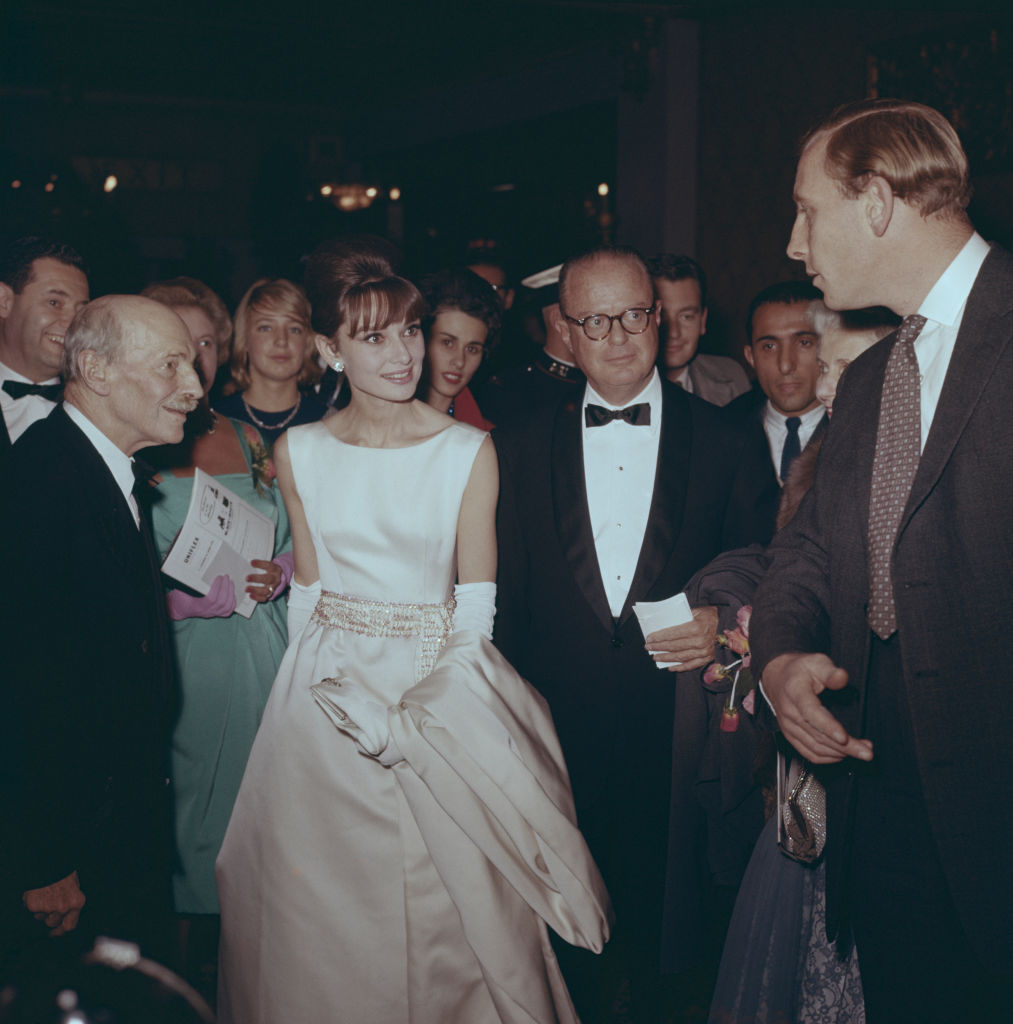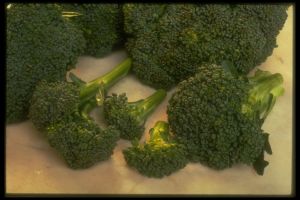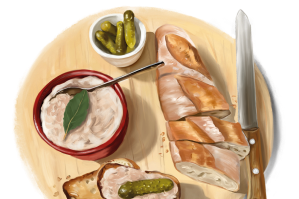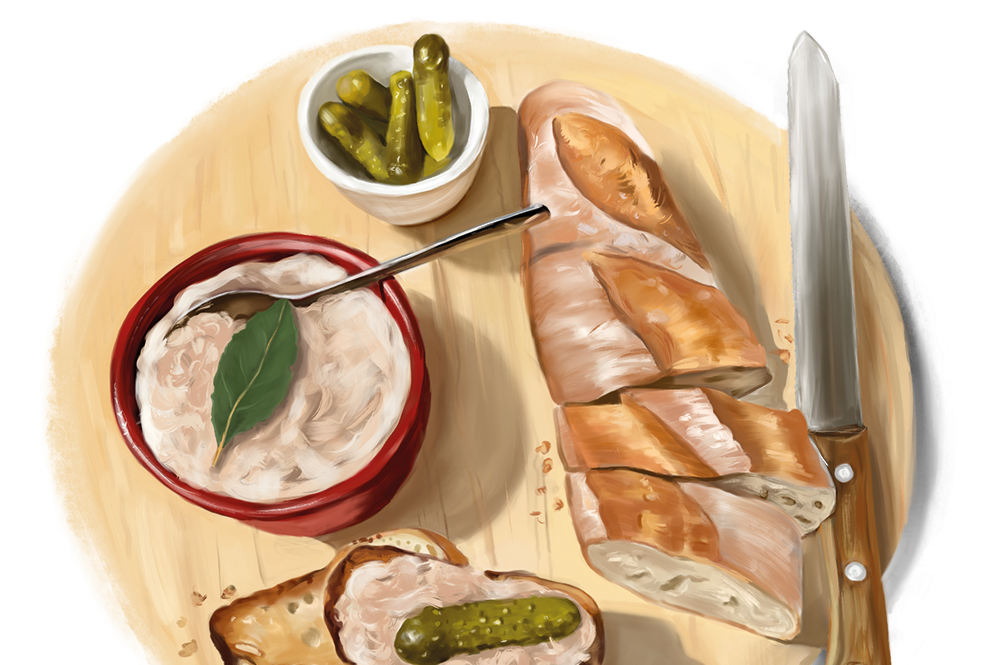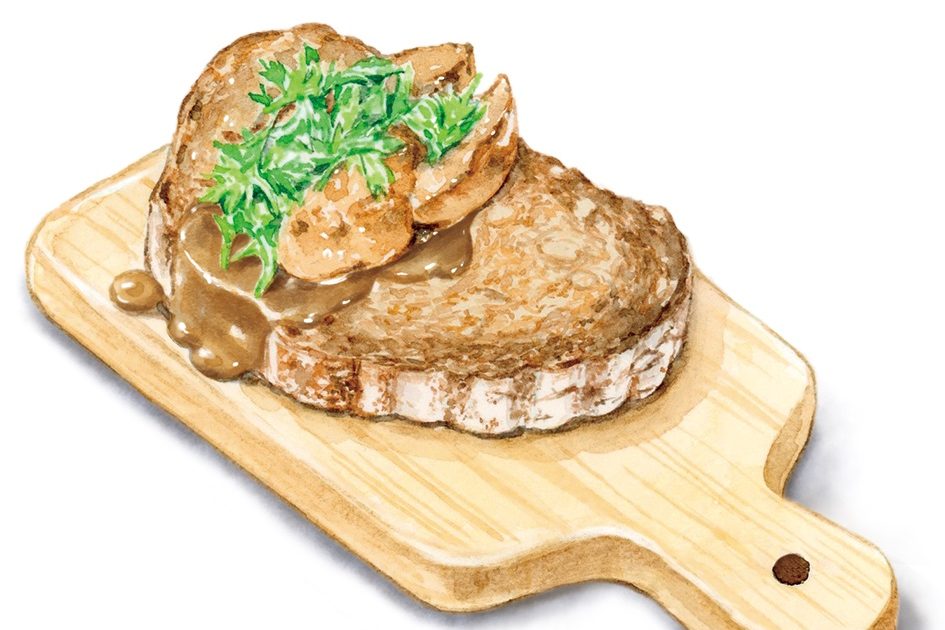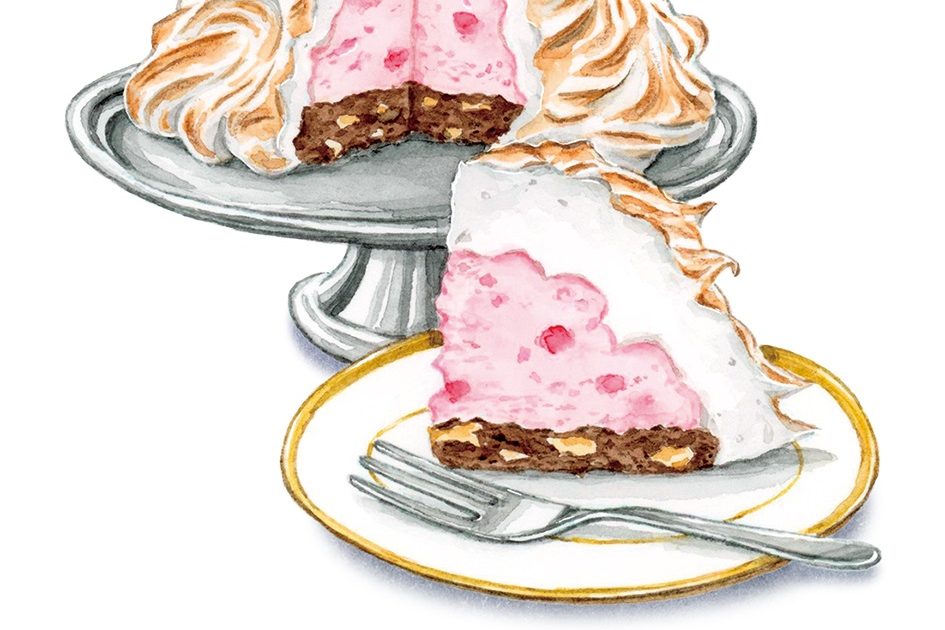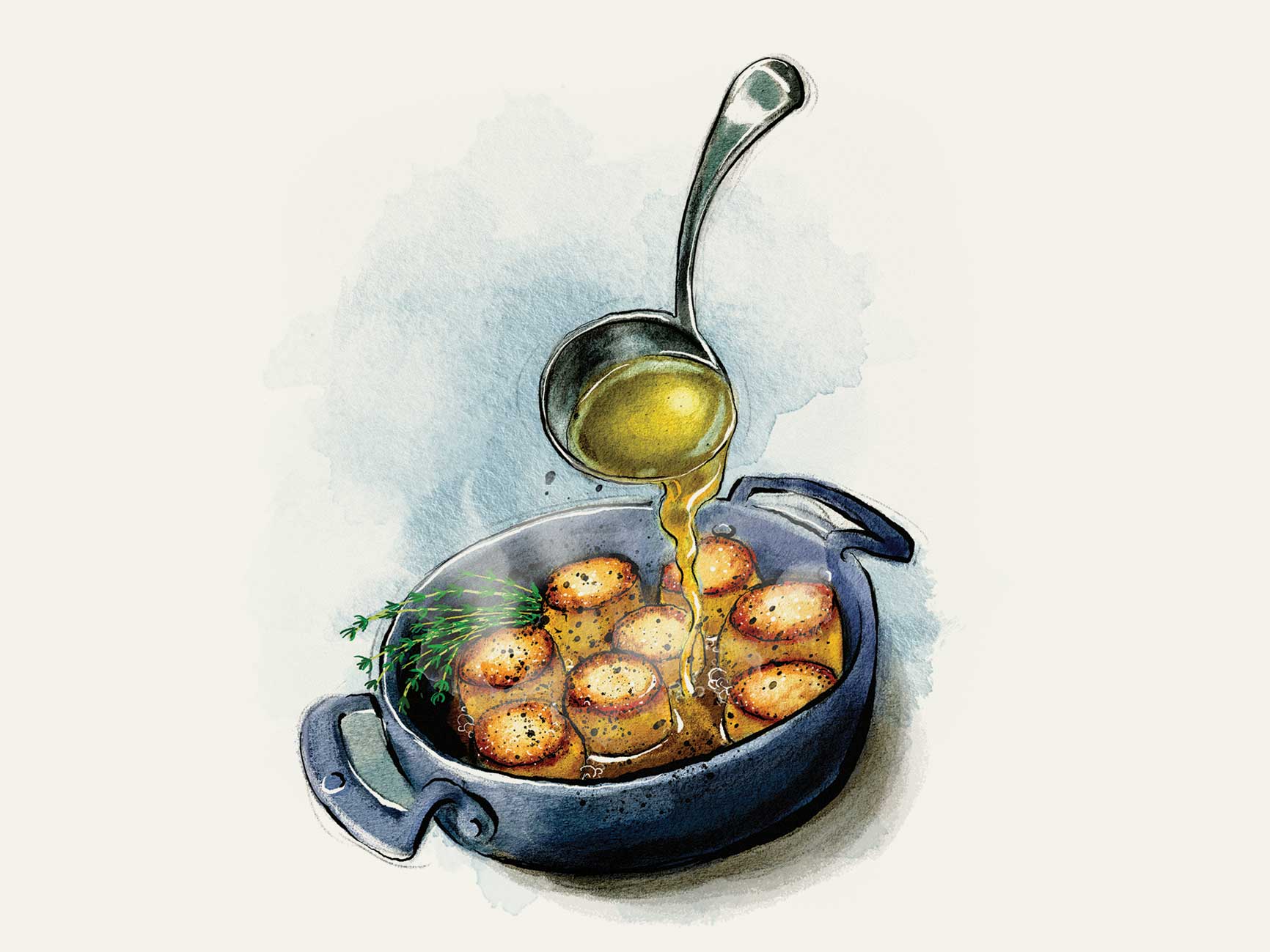It was late November when Diana called, telling me her butcher would soon kill the “fatted calf.” Sharing a butchered calf once a year with a Swiss friend meant you both had a freezer-full of veal at half price. Being asked to share a calf was also a sign of a deep friendship — akin to using tu instead of vous and locking arms in a toast over shot glasses of white wine. Both could take ten years, which was about as long as I’d known Diana.
I had long since gotten over what butchers did. I liked meat — most meat. But I didn’t want to see lots of blood. Growing up, I always asked my father for the outside slice of a roast or his charcoal-grilled steak.
Now, I drew the line with rabbit. Rabbit is not normally on an American menu. It was only when I moved to Switzerland in 1967 and saw all those lapins, hanging upside down, denuded of their soft fur, that I refused to buy or eat this quintessential Swiss meal. For some reason I did, however, love civet de chamois, mountain goat stew.
“We’ll split the chops, roasts and ground meat,” Diana told me, “but what do you want to do with the rest?”
“What rest?” I asked.
“You know, tongue, liver, brains and kidneys — the offal.”
“Oh, you can have all that,” I told her without thinking.
I’d momentarily forgotten that my parents were coming for Christmas, my father loved veal kidneys and I loved liver the way Harry’s Bar in Venice fixed it. I quickly reversed my “no” to “yes” — but just for the kidneys and liver.
As a child, I’d hated the smell of fried veal liver every Friday. “It’s full of iron,” my mother would say. “It’s good for you.” So I ate it, knowing I wouldn’t get dessert unless I’d cleaned my plate. No fish on Fridays in our house.
It was only when my husband Richard and I went to Venice on our honeymoon that I became a devotee of calf’s liver. We ate at Harry’s Bar, the celebrated bar-cum-restaurant on the Grand Canal that was made famous and infamous by clients including Hemingway, Cole Porter and Peggy Guggenheim.
The owners, the Cipriani family, opened the bar in 1931 for the artists and writers who gathered in Venice for inspiration, and the international aristocrats and plutocrats who needed a drink and scintillating company. The Bellini cocktail was invented at Harry’s Bar. So, they say, was carpaccio, after the countess Amalia Mocenigo’s doctor put her on a raw-meat diet.
The far-sighted hotelier knew that if he gave these notables something to eat as well as drink, more lire would go into the bar’s till. Cipriani, being a good chef as well as a bartender, whipped up a simple menu that would please his discerning (and sometimes nearly broke) clientele. One dish on the then-small menu was fegato alla Veneziana (tiny slivers of sliced veal, sautéed in butter with onions and garlic and sprinkled with parsley).
Colin Bather, one of Richard’s London chums, suggested that we go to Venice, where he and Valerie, his lovely wife, lived. He even offered to put us up at the Cipriani hotel at the “family price.” This was very kind of Colin, but even at that price, our budget couldn’t afford the stunning hotel.
Instead, Colin gave us the use of one of the hotel’s launches with Brigido (the skipper) for our entire stay. This proved to be an even better gift than a luxurious room at one of the world’s best hotels. Having a private launch at our disposal day and night in Venice was beyond fabulous and thoughtful.
We joined the Bathers at Harry’s Bar the night we arrived from Switzerland. Another night they took us to the Sunday night buffet at the Cipriani. Colin was CFO of the Guinness family investments, and both establishments were in the Guinness portfolio. How nice to have close friends in high places.
At Harry’s Bar Colin suggested that I try the fegato alla Veneziana. I didn’t mention my unpleasant childhood experience and followed his suggestion. Colin had great taste in art as well as food. He had already put the two famed icons of Venetian hospitality back in the black after years of barely surviving. In the case of this veal dish, as with so many of his ideas, he was right. I loved it and have made it umpteen times over many years.
I must admit I’ve never tried to cook veal kidneys, even though my father had discovered a recipe that my mother thought was divine. My father’s love affair with “veal kiddelies” (“I said kiddely, diddely I?” was the punch line of an old family joke) had become such an important part of my parents’ annual winter sojourn in Lausanne that I decided to give them the kidneys wrapped up in white butcher paper with a red bow for Christmas. My father had been diagnosed with pancreatic cancer that fall and I rightly assumed that my parents’ forays into Swiss villages for veal kidneys would be numbered.
Diana, a gorgeous and very efficient lady as well as a superb cook, had ordered the calf from her butcher in Épalinges, above Lausanne, where she and her mad Ukrainian husband lived. The Sedenkos gave terrific dinner parties, Diana often cooking for days in advance. A former British Airways stewardess, she could serve more than coffee, tea and milk, it turns out. Valik, a Ukrainian refugee and serious flirt, had a fiery, charming personality, and the couple often regaled their guests with tales of their unique sex life. Going to their dinner parties was a trip to the unexpected.
Small-town Swiss butchers only buy one calf a week. Frugal housewives like Diana arrange with their local butchers to buy a calf a year and save at least fifty percent over the price chez le boucher. A whole veau would be too much for a normal family.
The adventure for my father was to find a butcher who would reserve two veal kidneys for him every week. He went to every butcher in Lausanne and its neighboring villages to track down and reserve them. I’d written down for him how to politely ask the butcher, “Deux rognons de veau, s’il vous plaît,” and rehearsed with him how to pronounce the mouthful of French consonants and vowels. It’s not easy for English speakers to wrap their tongues around “rognons,” and we had some good laughs at what would come off my father’s. I knew he’d finally got it when he came home with his first kidneys. The “s’il vous plaît” posed no problems; my father was exceedingly polite.
I have no idea how many butchers my father visited; he went to any that he could reached with public transport, even though he had found a “sympa” butcher in Lutry, the charming village where we lived, who was more than happy to put the kidneys aside weekly for the debonair but dotty American.
One year for Christmas I’d given my father Dear Me, Peter Ustinov’s enchanting autobiography. While devouring the book, my father discovered that it took years for the actor’s local butcher to finally call him “Monsieur Ustinov” rather than simply “Monsieur.” Suddenly my father was going to take the boat from Lutry down the lake to Bursins (where Ustinov lived), find Ustinov’s butcher shop, and try his limited French. Maybe he’d bump into Ustinov. It was worth a morning adventure. He did find Ustinov’s butcher, but not Ustinov, much to his chagrin.
This year, having received my half calf, liver and kidneys included, I needed only buy a bottle of red plonk, parsley, onions and mushrooms to complete my gift, so my father could make his culinary magic.
The day before my parents’ arrival, I went to the Morges marché to top up the gift. We now lived in Chigny-sur-Morges, a hamlet above Morges, where I could see Audrey Hepburn’s pink farmhouse across a field in the neighboring hamlet of Tolochenaz. Hepburn was known to be an excellent cook. Her son, Luca Dotti, wrote a cookbook, Audrey at Home, about his mother’s kitchen flair.
I had contemplated knocking on my famous neighbor’s front door and asking if she had any suggestions for cooking veal kidneys. But our lawyer, who was also the star’s, was aghast at the idea and suggested I call her first. “You probably won’t reach her,” he said. “Audrey does answer the phone, but if she doesn’t know the caller, she will put on a fake voice. After all, she’s an actress.”
At the herb and mushroom stand, I found myself standing next to Audrey, Hermès scarf tied under her chin, large sunglasses completing the disguise. Nothing could hide her unique voice, however, even in a whisper. “What are you thinking of doing with the mushrooms?” she whispered to me as she lowered her glasses. When I said, “Rognons de veau,” the star suggested I add morilles (morel mushrooms). “They’d be perfect,” she whispered.
Christmas morning, my father opened his gift, a sly smile lighting up his face as he read the recipe I’d tucked into the wrapping. He died during the Christmas holiday. I’d like to think he’s met Ustinov and Hepburn over heavenly dishes of veal kidneys, discussing the joys of cooking and dealing with Swiss butchers.
Audrey Hepburn’s Veal Kidney Recipe
Ingredients:
4 small veal kidneys
Flour
3 tbsp cold-pressed extra virgin oil
2 small onions
2 cloves of minced garlic
½ cup of dry red wine
¼ cup chopped parsley
A handful of chopped mushrooms (morels, if in season)
Salt and pepper
Directions
Cut kidneys into bite-sized pieces. Dust lightly with flour. Heat oil in a sauté pan. On moderate heat, fry onion, garlic, chopped mushrooms and kidneys, stirring constantly for five minutes. Make a roux of flour and wine stirring until liquid thickens and reduces to a sauce (four to five mins). Turn off heat, add parsley and season with salt and pepper. Top with slices of lemon.
This article was originally published in The Spectator’s December 2021 World edition.



